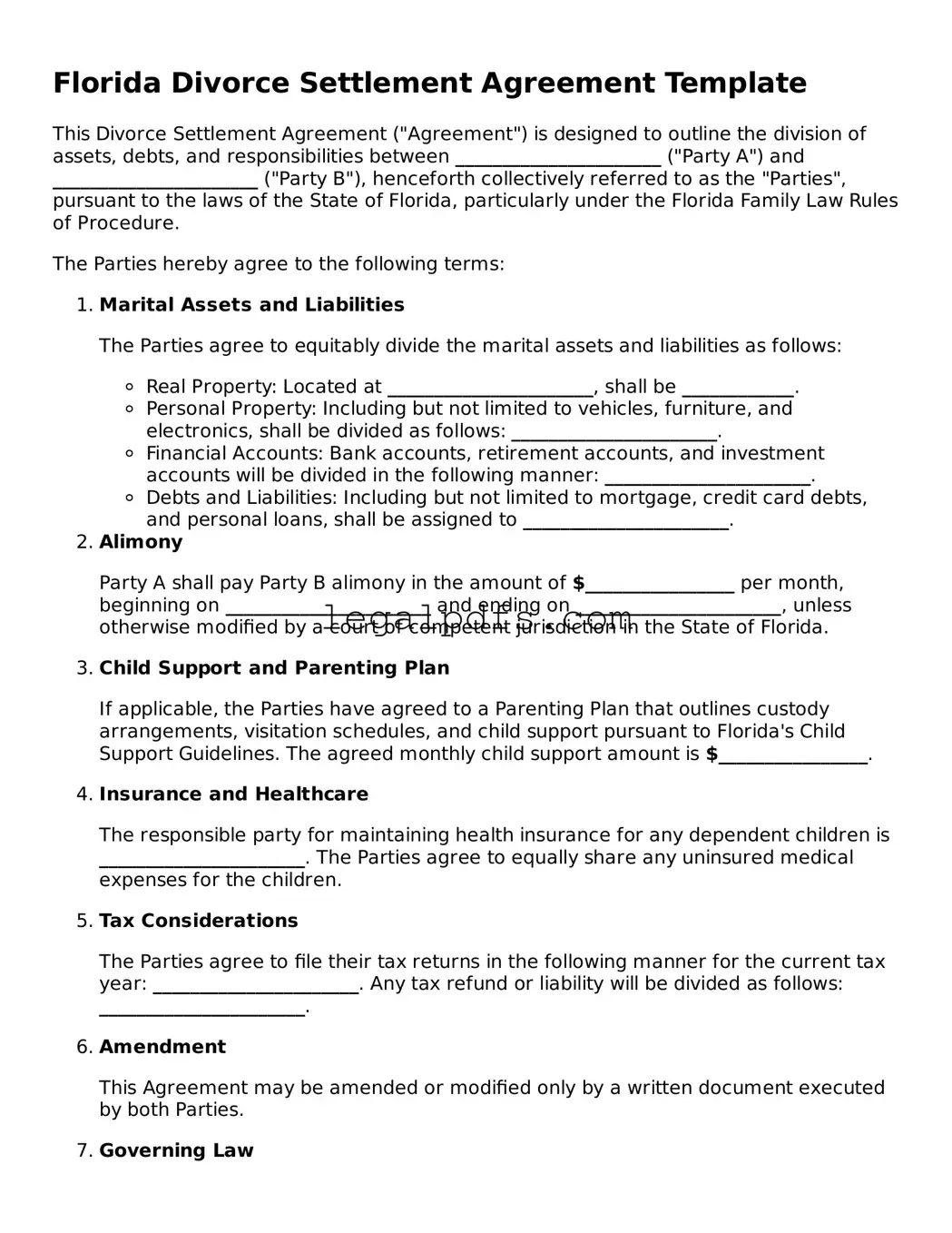What is a Florida Divorce Settlement Agreement?
A Florida Divorce Settlement Agreement is a legal document that outlines how a divorcing couple has agreed to divide their assets, debts, and other responsibilities. It covers important aspects such as child support, alimony, and the division of property. Once signed, it becomes a binding contract between the parties.
Who needs to fill out a Florida Divorce Settlement Agreement?
Any couple going through a divorce in Florida and wishing to resolve their divorce issues outside of court should fill out a Divorce Settlement Agreement. This document is especially useful for couples who have reached an agreement on the terms of their divorce without the need for a trial.
What information is required to complete the agreement?
To complete a Florida Divorce Settlement Agreement, both parties must provide detailed information about their finances, assets, debts, and any child-related issues that need to be addressed. This includes bank accounts, real estate, vehicles, investment accounts, and information regarding child custody and support.
How does a Divorce Settlement Agreement affect child custody in Florida?
While a Divorce Settlement Agreement can outline the terms of child custody and visitation, these terms must be in the best interests of the child(ren) and are subject to final approval by a Florida court. The court retains the authority to modify any arrangements if they are not considered to be in the child's best interests.
Can alimony be included in a Divorce Settlement Agreement in Florida?
Yes, alimony can be included and detailed in a Florida Divorce Settlement Agreement. The document should specify the type, amount, and duration of alimony payments. Both parties must agree to these terms, and they must be deemed fair and reasonable by the court.
What happens if one party does not follow the agreement?
If one party fails to follow the terms set out in the Divorce Settlement Agreement, the other party can file a motion with the court to enforce the agreement. The court may then take appropriate actions, including holding the non-compliant party in contempt, to ensure compliance with the agreement's terms.
Is a lawyer required to create a Florida Divorce Settlement Agreement?
While it's not legally required to have a lawyer create a Florida Divorce Settlement Agreement, it is highly recommended. A lawyer can ensure that the agreement properly protects your interests and meets all legal requirements. They can also advise on complex issues such as asset division and child custody arrangements.
How is the agreement finalized?
After both parties have agreed to the terms and signed the document, the Florida Divorce Settlement Agreement must be submitted to the court as part of the divorce proceedings. A judge will review the agreement to ensure it is fair and complies with Florida law before incorporating it into the final divorce decree.
Can the agreement be changed once it's finalized?
After it has been finalized by the court, changing a Florida Divorce Settlement Agreement requires showing a significant change in circumstances. Both parties must agree to the modifications, or one party must petition the court and prove that the changes are justified. The court will decide whether to approve the requested changes.
